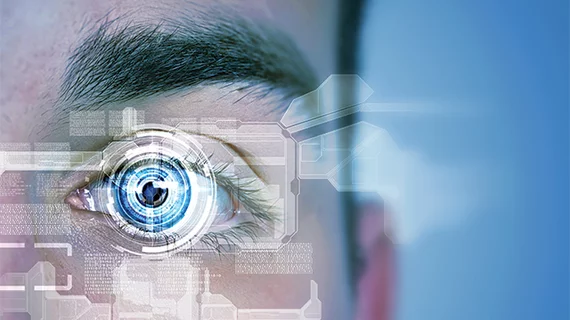Eye exams that leverage machine learning to track eye movement behavior are providing universities, research institutions and governmental agencies with more than a billion data points to better understand the connection between vision and neurological disease, according to health tech company RightEye.
RightEye “EyeQ” tests incorporate more than 650 unique metrics that capture precise information about a patient’s eye movements, the company said in a statement, including eye alignment and teaming, object tracking, depth perception and dynamic visual acuity. More than 100,000 tests have been conducted using the system, resulting in over a billion data points RightEye claims provide an “unprecedented level of granularity” for identifying vision-related issues and opportunities to strengthen vision.
The company has compiled its findings in a database that’s been used by Emory University, Duke University, the Richmond Veteran Affairs Medical Center, the U.S. government and more to study eye movement. The U.S. Department of Defense and Department of Veterans Affairs are applying the tech to a traumatic brain injury research project, and the Richmond center uses RightEye to detect distinct eye movement patterns that might signal the onset of serious neurological conditions like Parkinson’s disease.
“We have compelling data that eye-tracking can be used to reliably detect neurological dysfunction across multiple domains,” George Gitchel, PhD, of the Richmond Veterans Affairs Medical Center, said in the statement. “The output from the RightEye system represents an evolutionary leap in eye tracking research. Large studies, epidemiological research and other protocols that were once thought to be incredibly burdensome and logistically impossible have suddenly become easy to conduct using RightEye.”
In addition to applications in the diagnostic space, Duke is using a combination of game statistics and RightEye to study visual expertise in high-level athletes.
“Our ability to help science and medicine understand how the anatomy of the eye is linked to the brain opens up an entirely new world for providing better treatments to patients suffering from a host of health issues,” Melissa Hunfalvay, CSO for RightEye, said. “We are just beginning to touch the surface of this new frontier. As our system continues to get smarter with more data, we will continue to contribute more valuable insights on what the eyes indicate about our overall health.”
RightEye estimates that by the end of 2019, they will have gathered more than two billion eye-tracking data points.

